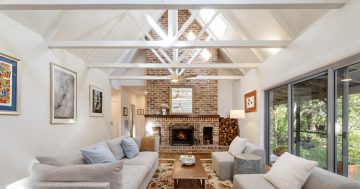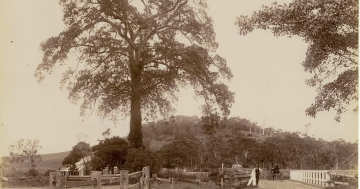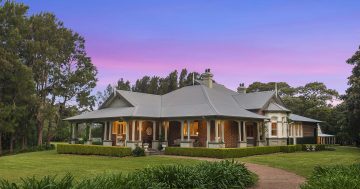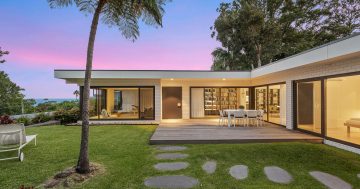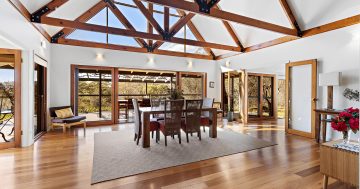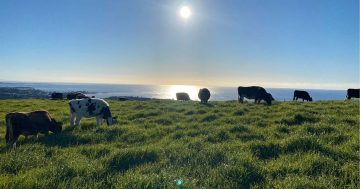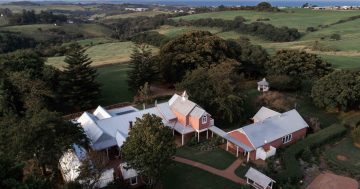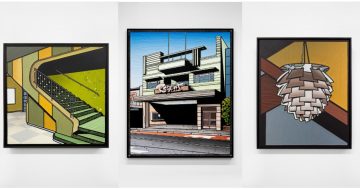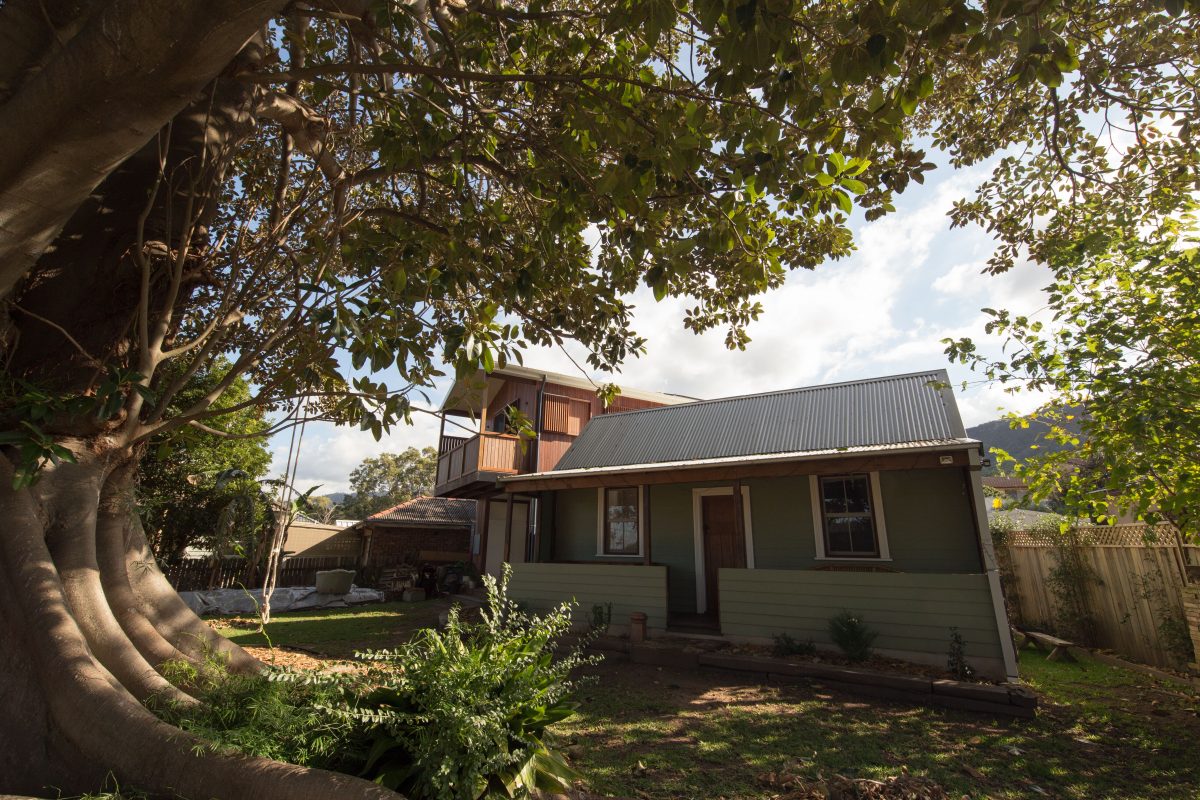
This is not two separate structures at 58 Redman Avenue, Thirroul – it’s a blending of old and new in the shade of a century-old tree. Photo: Davin Turner.
If you’ve ever walked past the corner of Henley Road and Redman Avenue in Thirroul, it’s unlikely you’ve missed it.
Rooted at number 58, against the backdrop of the escarpment stands an enormous fig tree, blooming into the open sky.
It’s the kind of arboreal marvel you expect to see in a state park, not a suburban front yard – but it’s been here for over a century and it’s not going anywhere.
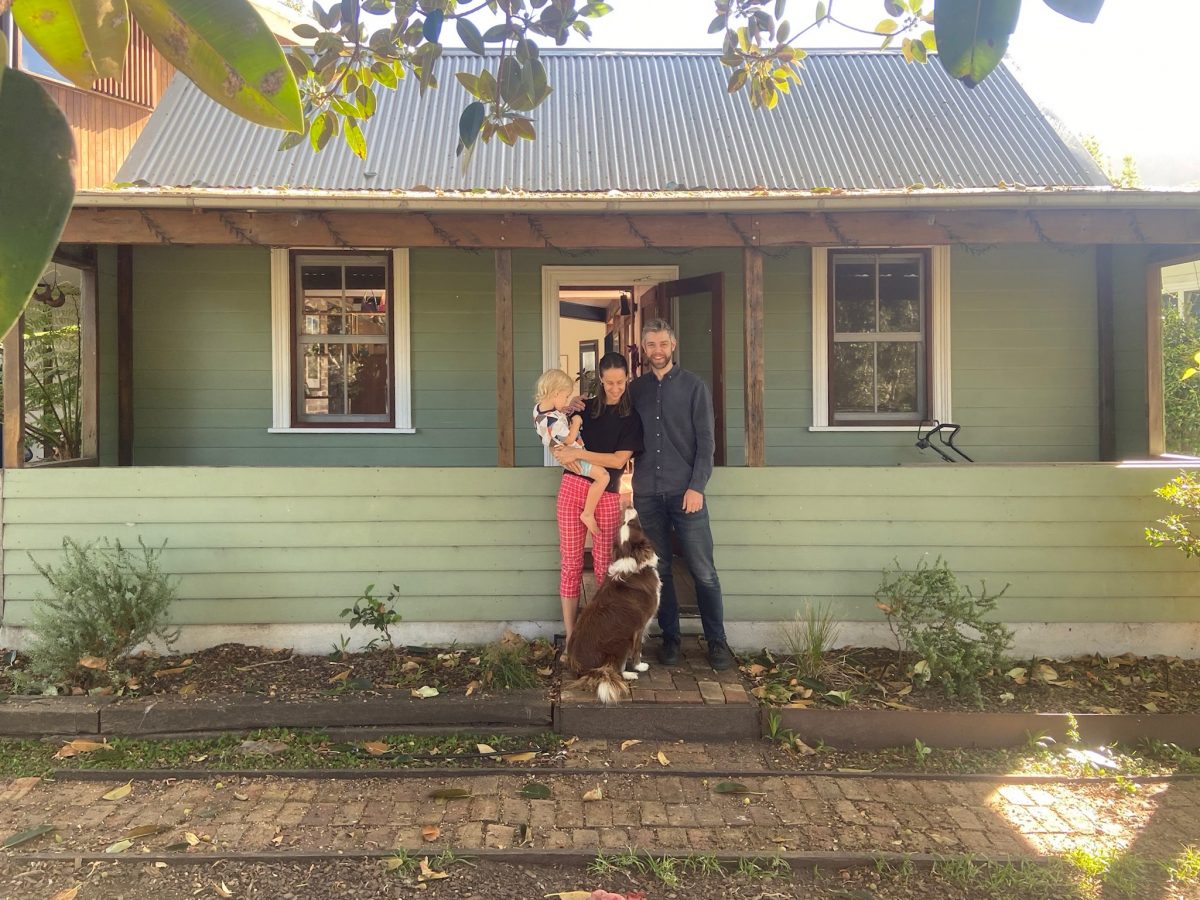
Davin, Kristen and their son Taz with Smokey the dog in front of the revamped 1920s cottage. Photo: Dione David.
Along with the original 1920s cottage it eclipses, this fig tree is heritage listed, which is fine by homeowner Davin Turner.
He is an architect who breathed new life into the old cottage and designed the eco-friendly addition in sympathy with the fig tree, originally for his brother who bought it seven years ago.
When his brother relocated to Tasmania, Davin and his family purchased it and moved in.
He acknowledges the tree, and the two juxtaposed and unusual structures it obscures, stand out.
“There’s definitely some intrigue about this place. People are curious, but we don’t feel like we’re on show. The fig makes it quite private,” he says.
“The tree does feel like a prominent part of the community. It’s a bit of a local landmark.”
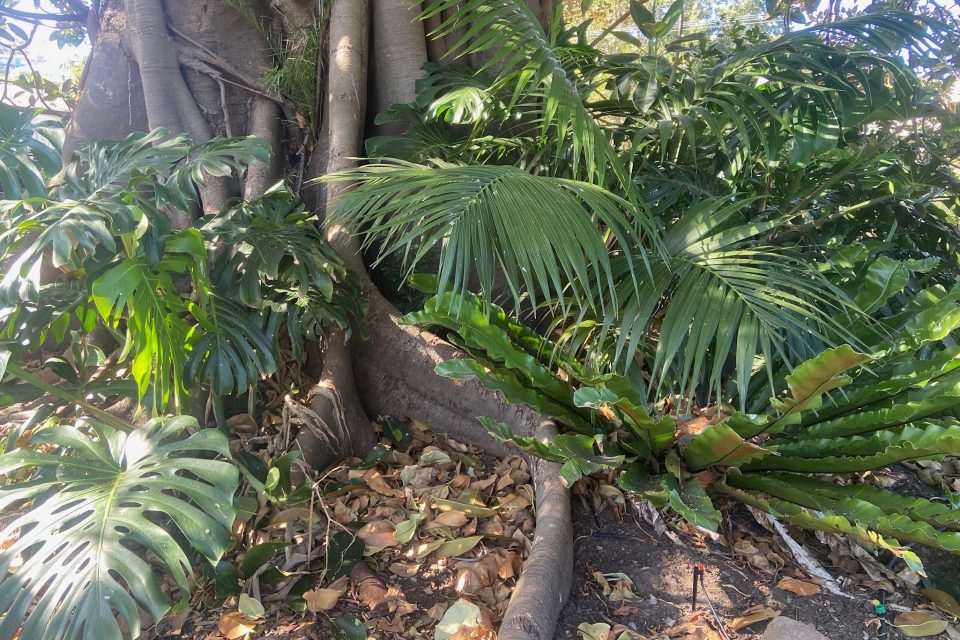



The property has been with the Turners for seven years, though what stands today is a far cry from what they originally bought.
“It was quite a dilapidated cottage. If you walked and dropped a marble, it would disappear,” Davin laughs.
Upgrading the property from a small cottage to a home fit for a family of five meant adding a considerable addition to the back. On a pizza-shaped block with its existing cottage and crowning glory – that tree – both heritage listed, it was an exercise in architectural innovation.
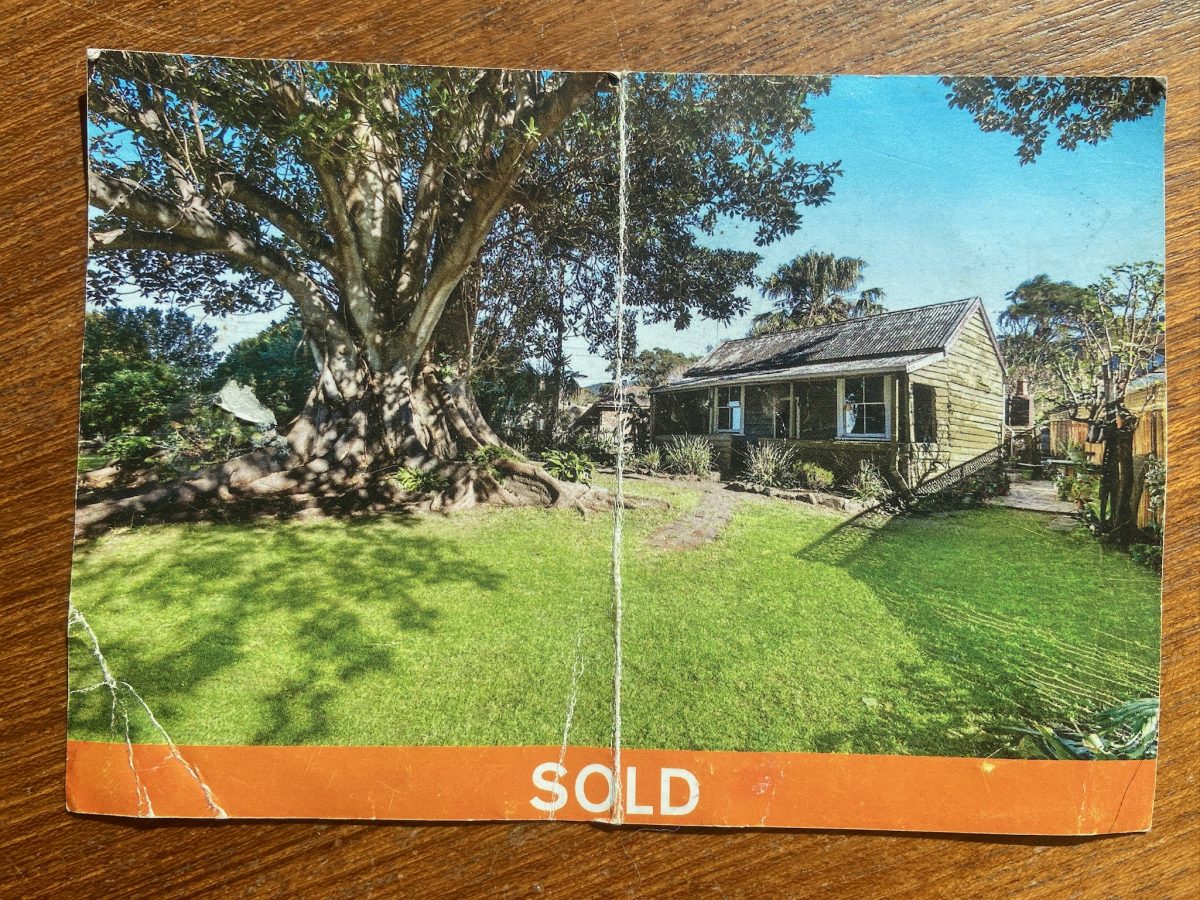
The property as purchased in 2016. Photo: Dione David.
Heritage rules stipulated that the new structure needed to be ‘subservient’ to the cottage – meaning it had to remain behind the cottage and couldn’t overshadow it.
The result is a curved, two-storey timber addition that many mistakenly take to be an entirely detached structure from the cottage. In truth, it’s the perfect example of Davin’s architectural philosophy.
“I like mid-century design. A lot of it is about reinterpreting the old and blending it with the new,” he says.
“It’s nice as an architect living somewhere you designed where you’ve got it somewhat right. And it works.”
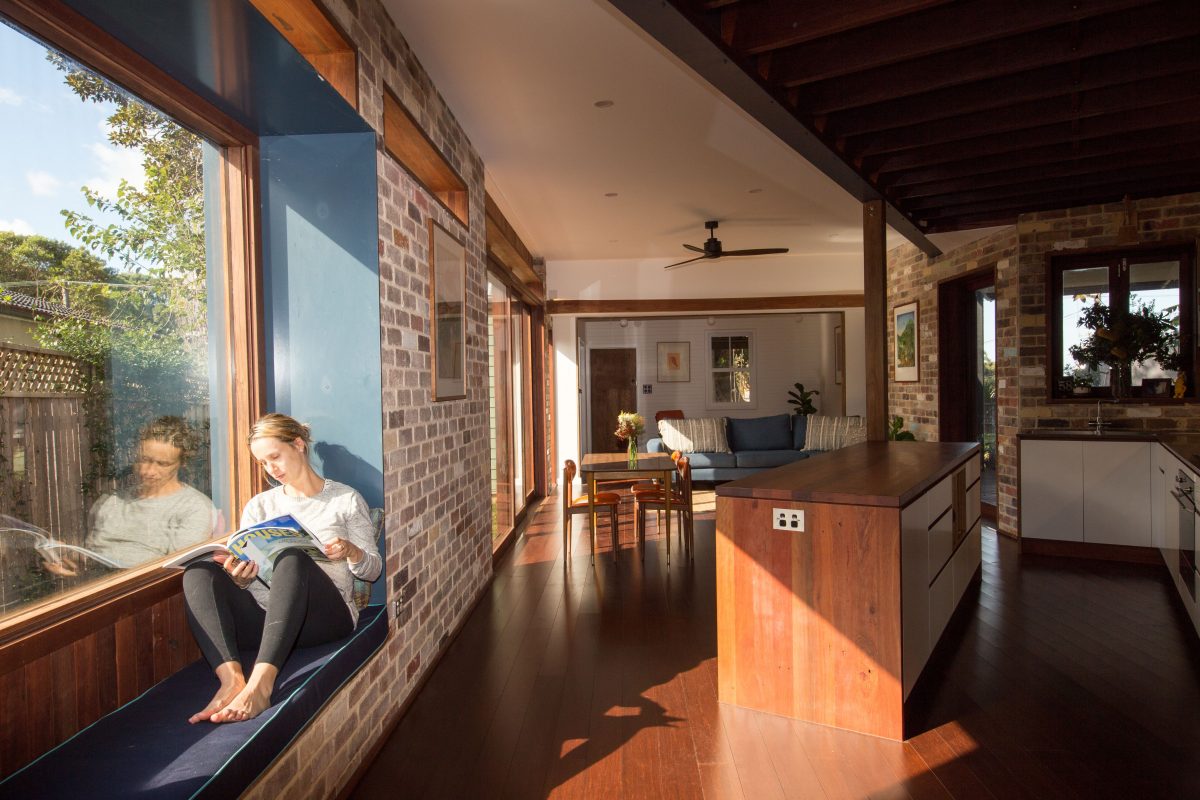
Passive solar design bathes the living areas in sunlight. Photo: Davin Turner.
He’s right – it does work. The house is entirely without heating and yet, it’s late autumn and Davin and his family sit comfortably at his dining table with the doors wide open leading out to their ‘winter deck’.
Positioned with a north-facing aspect, it bathes in sunlight, which also washes over exposed brick walls and timber floorboards that mask concrete foundations.
Passive solar design features heavily at Davin’s architecture firm, Studio Weave Architecture.
“Materiality is important. We used reverse brick veneer because it’s really good thermally,” he explains.
“By positioning the brick on the inside of the house rather than on the outside, that heats up during the day and at night, it slowly releases its thermal mass and creates really stable temperatures. Same goes for the concrete under the timber floorboards.”
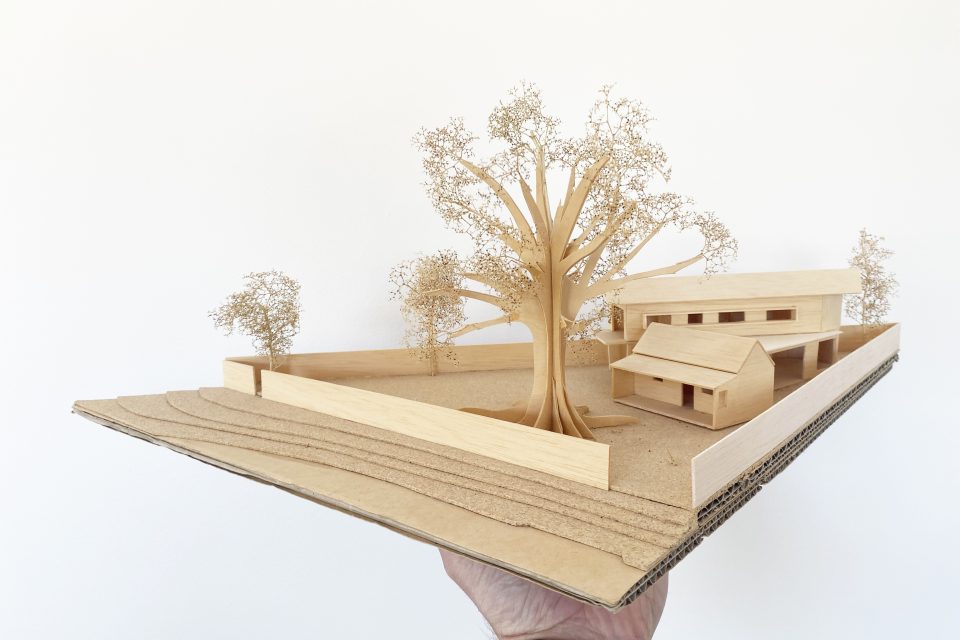
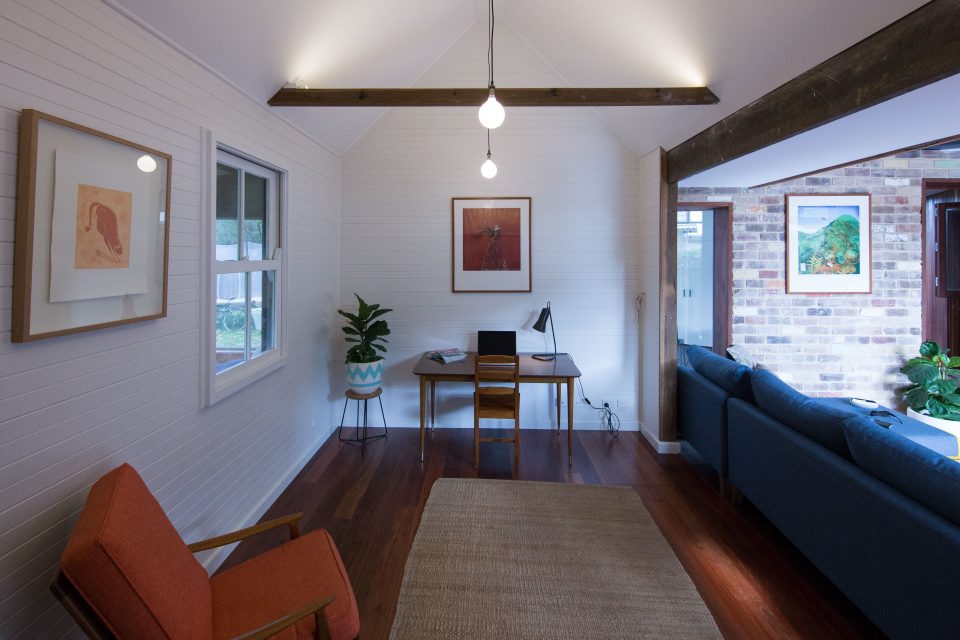

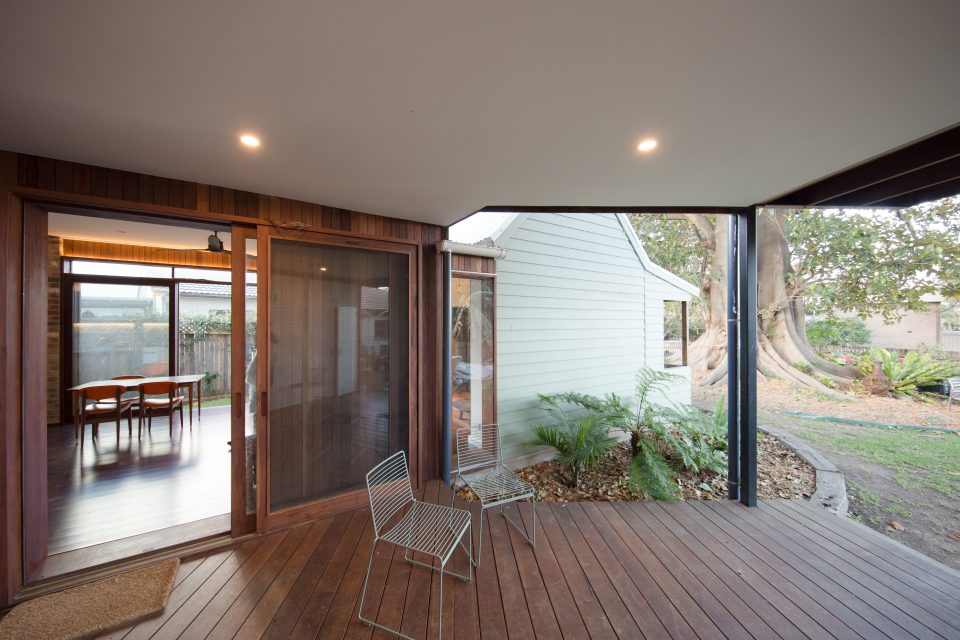
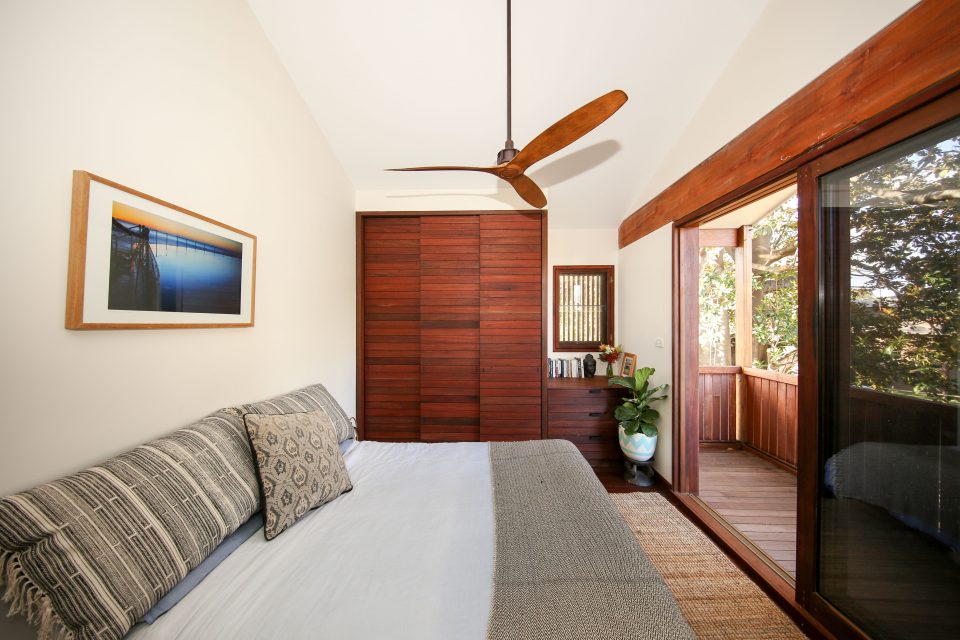
Sustainability is important in this household, as Davin explains.
“We live in our houses and use so much energy. If we can optimise that and build better places, not only is it better for our mental health but it can be good for our environment and our demand for energy.
“If we can bring a holistic approach to that it means our kids will have a brighter future and we can say we’ve done our best to leave this planet better than how we found it – because we definitely need to do that.”

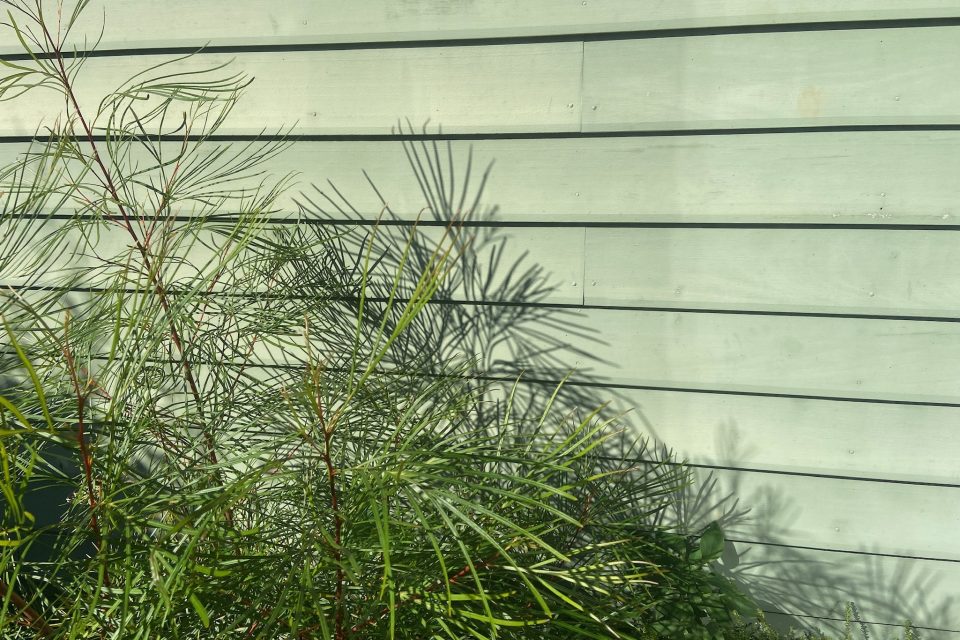
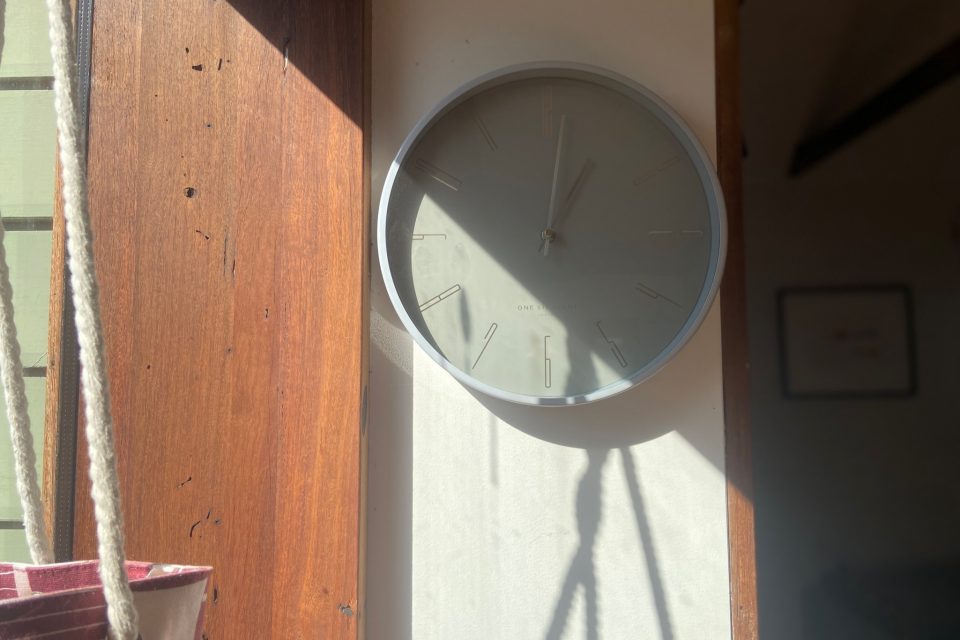

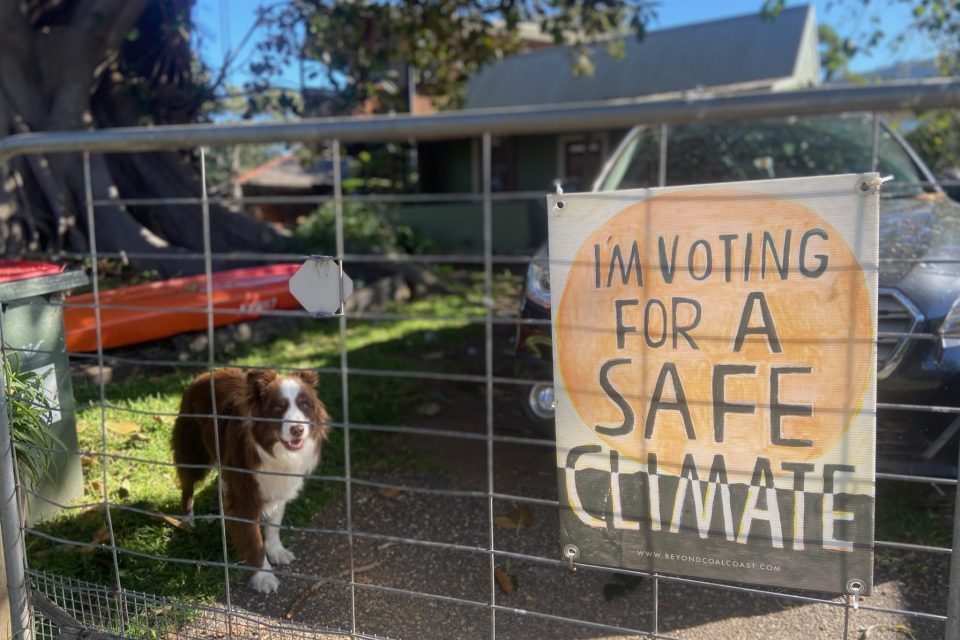
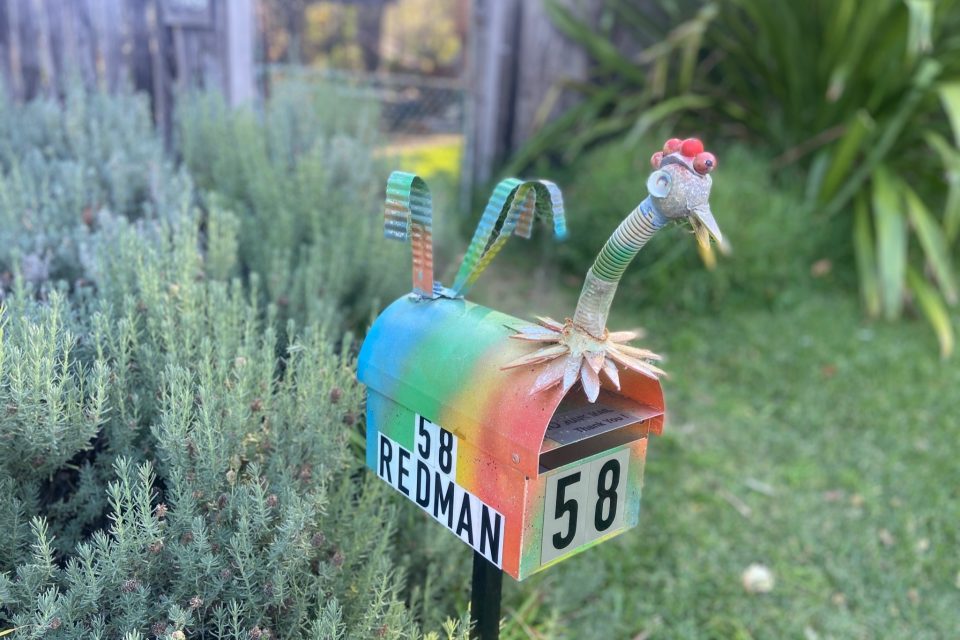
Davin and his partner Kristen McDonald are two of nine core members driving the Electrify 2515 initiative, which Assistant Minister for Climate Change and Energy Jenny McAllister recently said has put electrification on the national agenda.
Evidence of their commitment to the cause stretches throughout the property. The conspicuous fig, which is said to have been planted when the cottage was built over 100 years ago, stands like a monument to it.
“It has its own ecosystem. It attracts all sorts of insects and creatures,” Davin says. “There’s also a brush tail that comes and goes, it sits in a little hollow up there with his tail hanging out.
“At the moment it’s fruiting and the cockatoos and bats are gorging themselves. At night it sounds like it’s infested with gremlins.”
It’s perhaps not the most soothing soundscape come bedtime, but worth it for the honour of hosting such a beautiful natural marvel.









